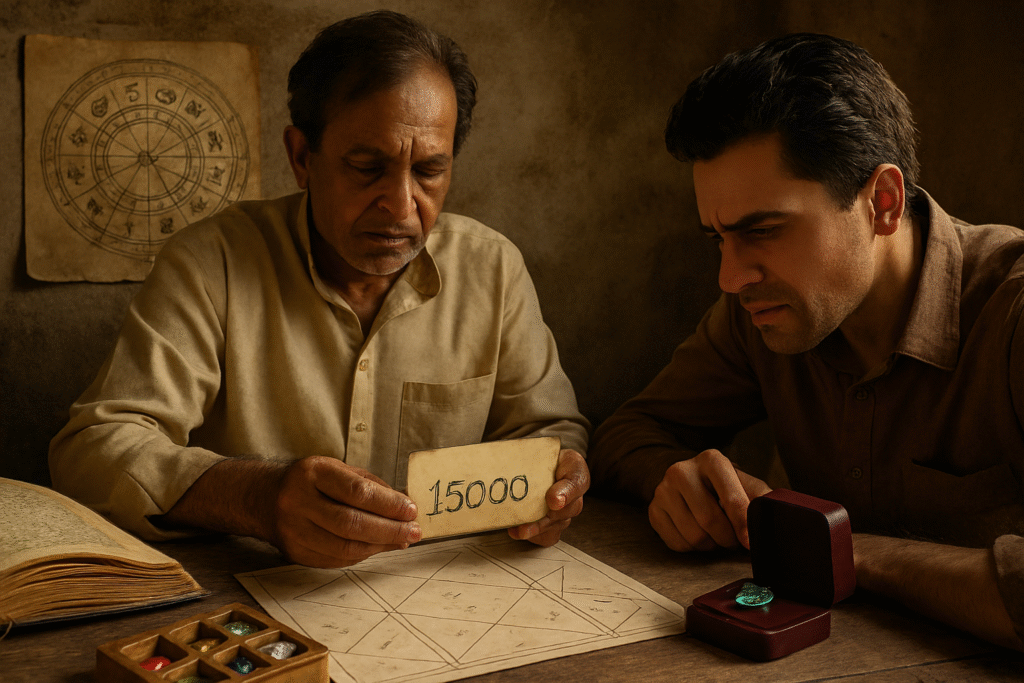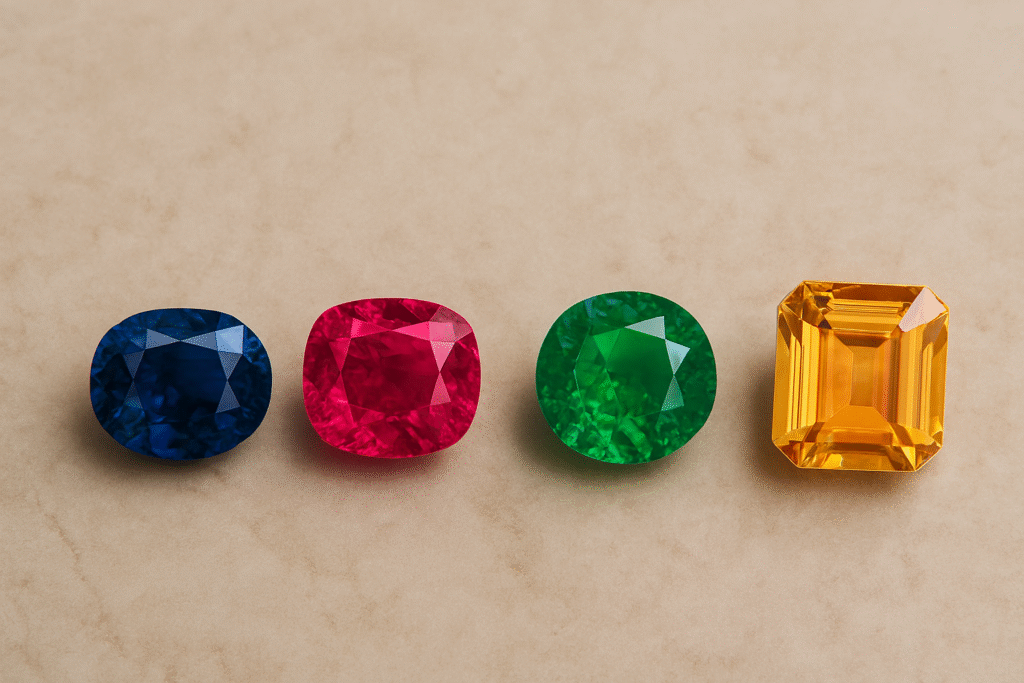Gemology Notebook Practice: Document Everything
Gemology notebook practice is the simplest way to grow your expertise.
Instead of relying on memory, write down every detail of the stones you examine—color, clarity, cut, luster, inclusions, and weight.
This habit builds a personal knowledge base that no textbook can replace.
Over time, your notebook becomes your most powerful tool.
“The key is consistency. A single page a day compounds into decades of gem knowledge.”
Why Gemology Notebook Practice Works
- Accuracy: Recording clarity, luster, and color reduces costly mistakes.
- Memory retention: Research shows people remember 70% more when they write notes.
- Pattern spotting: Notes help reveal trends across treatments and origins.
- Confidence: Written records provide evidence in buying and selling decisions.
See GIA’s gemstone education resources for further clarity on grading details.
Case Study
In 2023, a survey of Bangkok gem traders found that 64% credited gemology notebook practice with their ability to detect treated sapphires faster than peers who only relied on training.
Q&A: Building the Habit
Q: What details should go into my notebook?
A: Record stone type, weight, dimensions, color observations, clarity notes, inclusions, luster, and any known origin.
Q: Can digital tools replace handwritten notes?
A: Apps are useful, but handwritten notes sharpen your eye and memory more effectively.
Q: How often should I update my notebook?
A: Every time you handle a new stone. Even short notes and sketches add up.
What 40+ Years of Gemology Notebook Practice Taught Me
I’ve practiced gemology notebook habits for over 40 years. From Bombay and Jaipur in the 1980s to Cochin in Kerala today, my earliest notebooks still guide valuations and trade decisions.
Read the GIA article on Gemstone Color and Value to understand why consistent notetaking is critical.
Gemology notebook practice helps you record every stone’s details—color, clarity, luster, and weight. This builds a reliable knowledge base, sharpens memory, and reduces costly mistakes. Experts worldwide confirm this habit is the foundation of long-term success in gemology.
This comprehensive global cuisine FAQ covers everything about Asian and Western food and drinks. Whether you’re exploring international cooking techniques or discovering new flavors, this global cuisine FAQ answers the most frequently asked questions about world food traditions, ingredients, and culinary practices from both Eastern and Western cultures.
Global Cuisine FAQ: Asian & Western Food & Drinks
Food reveals cultural contrasts in clear and delicious ways. From cooking methods to dining customs, Asian and Western cuisines showcase unique traditions while also offering fascinating overlaps. Below, you’ll find answers to the most common questions about these culinary worlds.
Understanding Core Differences in Cuisine
1. What distinguishes Asian and Western culinary traditions?
Asian meals often rely on rice or noodles as a foundation. Flavors usually come from soy sauce, ginger, garlic, and a wide variety of spices. Meanwhile, Western gastronomy emphasizes bread, potatoes, and pasta. Dairy plays a key role, with butter, cream, and cheese giving richness to many dishes. Herbs such as rosemary and thyme highlight European cooking. These contrasts create distinct dining habits and flavor profiles.
2. Are Asian dishes always spicy?
No, not at all. While cuisines from Thailand and parts of India feature bold use of chilies, not every dish follows this pattern. Japanese sushi, Chinese dim sum, and Korean bulgogi are mild examples. In fact, Asian cuisines range from fiery to delicate, showcasing a rich palette of flavor.
Western Breakfast Staples and Comfort Foods
1. What constitutes typical Western morning meals?
Western breakfasts often include eggs, bacon, and toast. Pancakes, waffles, and cereal are also popular choices. These hearty starts are usually enjoyed with coffee, tea, or juice, providing both energy and comfort.
2. What represents popular Western comfort foods?
Comfort foods in the West speak to nostalgia and indulgence. Creamy macaroni and cheese, pizza, and hearty casseroles are favorites. Similarly, burgers and fried chicken have wide appeal. Because they are warm, filling, and familiar, these dishes strongly connect to emotion.
Cultural Dining Practices
1. Do all Asian cultures employ chopsticks?
No. Chopsticks dominate in East Asia—China, Japan, and Korea. However, Southeast Asia prefers spoons and forks, while India and parts of the Middle East often use flatbreads or hands. This diversity highlights how food customs closely reflect culture.
2. Why are some Asian foods fermented?
Fermentation preserves food while also enhancing nutrition and flavor. Korean kimchi, Japanese miso, and Indonesian tempeh show how tradition meets health benefits. These foods are valued not only for taste but also for their role in well-being.
Common Western Beverages
1. What beverages are common with Western meals?
Western dining often features water, soda, or fresh juice. Alcohol also has a strong cultural connection, with wine served at European dinners and beer central in North America. In the southern United States, sweet iced tea is a staple.
Dietary Flexibility and Options
1. Can one discover plant-based options easily?
Yes. Asian cuisines offer tofu stir-fries, lentil dals, and vegetable curries that are naturally vegetarian. Western food, similarly, embraces plant-based eating. Salads, vegetarian pastas, and vegan burgers have grown popular, making meat-free dining accessible worldwide.
Unique Asian Drinks to Explore
1. What are some unique Asian beverages?
Asia provides a wide variety of distinctive drinks. Bubble tea, from Taiwan, combines tea with chewy tapioca pearls. Japanese sake, made from rice, holds deep cultural meaning. Strong Vietnamese iced coffee, sweetened with condensed milk, adds a bold twist compared to Western brews.
Portion Sizes and Dining Habits
1. How do portion sizes compare?
Western meals often emphasize large servings, reflecting abundance. By contrast, Asian meals are usually smaller yet balanced, encouraging sharing and mindful eating. This creates different social experiences around the table.
The Art of Fusion Cuisine
1. Is it feasible to integrate Asian and Western flavors?
Absolutely. Fusion cuisine blends traditions in creative ways. For instance, teriyaki burgers combine Japanese flavors with American fast food, while kimchi tacos bring Korean spice to Mexican street food. These playful mixes show how food bridges cultures.



